Don't wanna be here? Send us removal request.
Text
A look into a newly formed business (Prospectus Summary)

PROSPECTUS SUMMARY
This summary highlights selected information that is presented in greater detail further into this prospectus. This summary is a shortened version of our company purpose, but does not contain all of the information you should consider before investing in our Class A common stock. You should read our entire prospectus before making an investment decision.
E-Coat Inc.
At E-Coat Inc., our business mission is to manufacture and install an environmentally friendly alternative building insulation. The vision behind this is to provide consumers with compostable insulation that contains recycled materials.
For the last five years, we have offered the state of Michigan our innovative, alternative insulation. This specialized insulation is predominately comprised of a plant-based fiber (Cellulose). Through our recent product innovations, we have become the first company in the insulation industry to incorporate recycled plastics within our product, which allows us to fulfil our eco-conscious consumers’ needs.
Problem Solving Innovations
At E-Coat Inc. we have pinpointed the problems that we want to help solve, for the public’s interest. For five years, we have been actively involved in these causes to solve some of these environmental threats.
We take science very seriously and have acknowledge the fact that by the year 2050, it is projected that there will be more pieces of plastic in the ocean than fish. This is a problem that we want to raise awareness to and help solve, moving forward.
In general, consumers do not have a wide variety of insulation options that are eco-friendly. E-Coat Inc. has stepped up to help solve the earth’s plastic consumption problem by giving hundreds of thousands of pounds of discarded plastics a second life. By incorporating recycled plastics within our insulation, it has reduced the amount of plastic that would have otherwise ended up in Michigan landfills, and its four Great Lakes.
Our consumers have rallied behind our efforts because they know that plastic consumption effects everyone. We have furthered our company’s reach by promoting the fact that Michigan’s plastic consumption is a problem that is worth solving because sustainability is the only way that humans can thrive, moving forward. This general notion is becoming ever more popular within the millennial generation, and E-Coat Inc. is standing to help our consumers fight this cause.
Our Insulation does not expose our consumers to fiberglass, because fiberglass evokes asthma symptoms. Long term exposure to fiberglass insulation can create serious respiratory issues for consumers, which is something that our brand expressively does not condone. Our consumers have had a positive reaction to the fact that we do not use fiberglass within our insulation. We make sure to inform the public of the dangers of fiberglass, and the fact that fiberglass insulation does not break down for hundreds of years once it is discarded of.
E-Coat Inc. also realizes a new threat that the United States environment is experiencing. As of 1/1/18, China revoked its contract with the United States, cutting off all imports of recyclables from The United States. This is a new dilemma for the United States, one with no clear-cut plan in place. There is a new excess of recycled plastics in the United States, and E-Coat Inc. will continue to help manage this crisis by compounding recycled plastics into our finished products.
Favorable Trends/Opportunity for Growth
The current market does take environmentalism into account. According to Forbes.com, A 2017 study on corporate social responsibility revealed statistics on customers' responses when a company supports social or environmental issues. 68% of millennials bought a product with a social or environmental benefit in the past 12 months. 87% of consumers will have a more positive image of a company that supports social or environmental issues. Further, 88% will be more loyal to a company that supports social or environmental issues, and 87% would buy a product with a social and environmental benefit if given the opportunity.
E-Coat Inc. does have an environmental edge, and we are taking full advantage of it well before these environmental threats become every day dangers for the United States. We hope that our efforts will help to end these environmental threats. However, it is not likely that the government will mandate a reduction of plastic use. Because of this, it is reasonable to expect plastic consumption to continue to excel until the country reaches a tipping point. Paradoxically, this notion will raise the general public’s awareness of plastic waste, and help our company to continue to grow.
Gentrification
The economy has been seemingly strong in the past five years. Many big cities are experiencing gentrification, which is leading to the redevelopment of entire neighborhoods, and the buildings and houses within them. This is especially evident in the city in which E-Coat. Inc. resides, Detroit, Michigan.
Eco-Coat Inc. will be a viable option for consumers during this spike in redevelopment in Detroit. We are able to scale the demand for our product by partnering with local recycling plants, which helps us keep shipping costs down.
Value Proposition
Our value proposition matches our company brand: “Boosting eco-consciousness through insulation”. Over the last five years of operations, we have successfully identified with Michigan’s environmentalist audience. We also expect to continue to broaden our reach to more millennials though our business ethics, and value proposition.
Risks Affecting Us

Our business is subject to numerous risks and uncertainties, including those emphasized within the “Risk Factors” section of this prospectus. These risks include:
· Investments or acquisitions could result in financial and operating difficulties.
· Security breaches could potentially harm our brand, resulting in poor revenues.
· If we do not continue to maintain and improve our insulation products, our company may suffer.
· If we do not continue to maintain and improve the way in which our installation teams work, our company may suffer.
· Our continued growth relies on our ability to attract new customers and to retain our brand loyal customers.
· In the past, we have experienced one year of net income losses that hindered our ability to grow and expand operations.
· We may pay up front attorney fees, and if these attorneys are unable to get us out of a claim, as expected, our business and financial condition may be harmed.
· The storage, processing, use and disclosure of personal data could give rise to liabilities as a result of conflicting legal requirements, and governmental regulation.
· Our payment system relies on third-party providers, which may entail certain risks that may harm our business.
· Since our financial results vary by the time of year, our quarter-to-quarter operational results may not be indicative of our year-to-year operational results.
· Our company is subject to broad range of regulations and laws. Our failure to comply within the scope of these laws and regulations could result in a penalty that could harm our company.
· Our most recent growth rates may not be indicative of our ability to continue to grow, in the future.
· Our industry is highly competitive. We expect copycat insulation businesses to enter the market, and if we are not able to maintain or improve our competitive position, our company may suffer.
If we are unable to adequately address these and other risks we face, our business, results of operations, financial condition and prospects may be harmed.
Five-Year Financial Data Table

The following table summarizes E-Coat Inc.’s five-year financial data Table. As depicted below, our five-year financial data depicts data of our revenue results, starting from our first year of operations (2014), running through our most recent year-to-year operational results (2018).
Our five-year financial data table depicts our revenue and expenses, in consideration to EBITDA. In 2014, our revenue data reveals a gain of $611,000, with EBITA expenses compiling to $645,000. Overall, ended our first year of operations with a net income of -$34,000 (2014).
2015
E-Coat Inc. was able to endure the losses that it had experience in 2014 through its VC backers, and investors. We persevered through our 2014 losses and decided to take a risk and hire three additional employees in order to increase production, which expended $90,000 from our 2015 quarterly revenue. Our depreciation on vehicles and equipment increased roughly $25,000 in 2015. However, we were able to end 2015 with a revenue of $960,000, and an EBITDA balance of $800,000. Therefore, we were able to generate a net income of $160,000, our first positive net income data result in company history.
2016
In 2016, we decided to hire one additional employee, and expend our 2015 profits towards a new marketing plan. As a result, our liability expenses increased. In due course, our revenue data exhibited a mild plateau, in comparison to 2015. However, our revenues increased by $260,000 from 2015, resulting in $1,220,000, in total revenue. Our EBITDA expenses totaled to $908,000, resulting in a net income of $312,000, for year three.
2017
In 2017, we expended additional cash in order broaden our marketing scheme. This risk resulted in an increase of revenues by $530,000 from year three. In total, our year four revenue came to $1,750,000. This spike in revenue is also a directly correlates with the fact that we decided to bring on many new employees. By doing so, our salary expenditures increased by $110,000 from 2016. Our revenues jumped, significantly, however. The increase in product production caused our EBITDA to jump $239,000 higher than in year 2016, totaling to $1,147,000. Overall, our net income totaled $603,000 in 2017.
2018
In 2018, we increased our salary expenditures another $115,000, while high production caused our COGS expenditures to rise $100,000, from 2017. However, these high expenses boosted our year five revenue by $500,000 from 2017, totaling to $2,250,000.
In 2018, our EBITDA again rose from 2017, totaling to $1,422,000. This EBITDA increase percentage would not be sustainable on a year-to-year basis. We realize this and project that we could afford to take a hit on our expenses, in order to gain assets (Machinery/installation vehicles). ($172,000). Our 2018 net income results did however counteract our risky expenditure increase, totaling to $828,000 net profit.

RISK FACTORS
Investing in our common stock involves a high level of risk. You should carefully consider the risks and uncertainties described below, before making a decision to invest in our common stock. The risks described below may not be the only ones we face. If any of the risks actually occur, our business, results of operations, financial condition and prospects could be harmed. If any of these instances do occur, our trading price may decline, causing investors to could lose investment percentages.
Risks Related to E-Coat Inc.
Our continued growth depends on our ability to attract new retailers, new building renovation companies, and new segments of consumers.
Our success depends on our ability to attain and retain business transactions with home improvement retail stores. We also depend on existing and new partnerships with building renovation companies. We may fail to attract new retailers, building renovators, and targeted consumers due to a number of factors outlined in this section, including:
· Our ability to convince our current retail partners to continue to carry our products within their stores.
· Our ability to convince our current retail partners to carry our products within more of their store locations.
· Changes in our relationships with third parties, including key partners that help us run our day-to-day operations.
· The availability of key payment methods.
· Our ability to maintain and innovate our products and services.
· Our ability to continually incorporate our environmental approach within our product.
· Our ability to continually maintain and enhance our company website, and online services, that help us gain, and retain customers.
· Competitive factors, such as new and existing competitors within our industry
· Our ability to adapt to changes in the marketplace, and how consumers pay.
· Our ability to manage fraud risk that negatively impacts our key partners.
· Access and affordability to marketing channels, such as TV ads, radio ads, search engine marketing, and business to business marketing.
· Our ability to scale the amount of products desired by our partners.
· Our ability to comply with the laws and regulations within the scope of our company. SEC penalties negatively affect our company, and could bring negatively enforced attention to the public, which could hinder our brand name.
· Changes in consumer behavior.
· Changes in economic status.
· Access to sufficient financing.
· Our ability to adapt to regulation changes.
· Challenges associated with new products.
· Our ability to comply and overcome arising liabilities, such as torts, or Claims filed against us.
· Our ability to stop copycat companies from reverse engineering our product and being able to finance the legal fees associated with filing a Claim against those companies.
· Our ability to renew our product patents.
· Our ability to comply with laws and regulations of individual states. If we fail to comply, we will not be able to come to terms on a possible key partnership agreement, involving the sale of our products outside of the state of Michigan.
0 notes
Text
Social Media Policy (E-Coat Inc.)

Policy
This policy offers direction for employee use of social media, which must be understood and exemplified. The purposes of this policy includes online forums, blogs, and message boards, with specific emphasis on social media platforms
Guide of Policy
As an employee or member of E-Coat Inc., it is crucial to understand the importance of social media for business promotion and practices. E-Coat Inc. has implemented the following social media policy to help our employees understand and adhere to standard social media practices that have been put in place to protect the employees, their jobs, and E-Coat Inc. as a whole.
Any employee of E-Coat Inc. may participate in an online social network of any kind, or create a blog. All employees must adhere to the same guidelines that are found in the employee handbook, including policies regarding employee activity and conduct, apply to employee activities on social media or other forms of online publishing.
Social Media
Any time you participate in social media, you are posting on your own behalf unless expressly requested by E-Coat Inc. to post on the company’s behalf. Any posts on social media or other online publishing should be made under your own name.
When posting anything that is associated with you professionally, it is vital that you post a disclaimer such as: “the opinion expressed here is entirely my own and does not represent the views or opinions of E-Coat Inc.”
Always adhere to copyright standards and respect the intellectual property of others when utilizing social media platforms or other online publishing forms.
Do not, under any circumstances, disclose any personal information about the company or its employees.
Do not disclose confidential information about E-Coat LLC, its practices, or any information meant to be shared only with fellow employees.
Any rumors, or confidential information shared via social media may result in a negative impact on this company and its reputation. Legal action may be brought against the individual responsible for the publication of this information.
While on company time or company computers, no employee should share anything with another employee via social media that may be considered inappropriate or fall under the category Not Suitable for Work. This includes items of a sexual, profane, or excessively violent nature. If these instances occur, disciplinary action will be considered onto the policy breaking employee.
Ideal Practices
Always respect your audience. Use social media as a respectful tool to share ideas and information. Be mindful when dealing with sensitive subjects such as religion, politics, and sexual preferences.
Share content wisely. If you publish an item professionally, you may help to strengthen the community of E-Coat Inc. Make sure that your published content promotes the principles and company culture of E-Coat Inc.
Protect your privacy. Always consider revising your thoughts before posting content. Always remember that what you share may remain in the public domain for a long time afterwards. Make sure you are protecting your own privacy and that of the company’s.
Employees are responsible for ensuring that their online activities do not interfere with their ability to perform their job, or to fulfill commitments to their managers, co-workers or clients.
4. ACCEPTANCE
I attest that I have read this Social Media Policy in its entirety and do understand all policies contained therein. I will uphold the standards set forth in this document, and will maintain appropriate and professional conduct when accessing social media.
Employee Name: _______________________________
Employee Title: _________________________________
Signature: __________________________
Date: ________________________
0 notes
Text
Crowd funding Plan Paper (E-Coat Inc.)
Company Name/Purpose
The name of our start-up company is E-coat Inc. and we are based in Detroit, Michigan. Our start-up manufactures and installs an environmentally friendly non-fiberglass building insulation. Our insulation consists of a plant based fiber called cellulose. We also incorporate a mixture of recycled plastics and discarded denim, which promotes ecological sustainability.
Project Name
When a potential backer views a crowd funding campaign page, the first thing that they will see is the project name of the campaign. For this reason, I made sure that my project name properly summarized our company’s products and services with eye catching content. After much thought, I decided to name my campaign “Building Insulation Made from Plants/Recycled Materials”.
Value Proposition
To avoid confusion, a good value proposition should not be too long. Rather, it should be short and concise, with a maximum of six words. To remain compelling, it should also explain why my products and services can add value to potential customers, and prove why my solutions are better than the competitors within the marketplace. I created five value positions and kept the one that represents our brand best. The first value proposition that I created is “Sustainability made affordable”. The second being “Bringing Eco-conciseness to you”, followed by “Helping your no waste cause today”, and “Sustaining for the future”. Finally, decided to finalize our value proposition as “Helping you build sustainably”. I Chose this value proposition because it clearly states our purpose.
Customer Avatar
Demographics are an important aspect to consider when evaluating a business plan. Our customer demographics include adult men and women between the ages of 25-65 who are constructing or renovating buildings or homes.
Some psychographics of my targeted customers include people who are ecologically conscious of the earth’s environment and people who are willing to pay more for their insulation to fulfill their environmental responsibility. Therefore, we are going to target people who have a college degree and earn an annual income of $80,000-$250,000.
According to Forbes.com, A 2017 study on corporate social responsibility revealed statistics on customers' responses when a company supports social or environmental issues. 68% of millennials bought a product with a social or environmental benefit in the past 12 months. 87% of consumers will have a more positive image of a company that supports social or environmental issues. Further, 88% will be more loyal to a company that supports social or environmental issues, and 87% would buy a product with a social and environmental benefit if given the opportunity. (Do customers really care about your environmental impact)
Funding Goal
Through our campaign plan model, we made sure that our funding goal amount was a realistic number that will fulfill the project and backer rewards. According to a Kickstarter Study, a very high funding goal is likely to result in a failed attempt. A lower and more realistic funding goal is more likely to succeed, and may even exceeded your original goal. (How do you decide on your projects’ funding goal) In order to fulfill our project, we set our crowdfunding campaign goal to $4,000. If our campaign exceeds our goal, we have crunched the numbers and can successfully scale the amount exceeded.
As of now, our start-up has raised enough money to open for operation. Our crowdfunding campaign is designed to raise extra funds while boosting our brand awareness through our rewards. We need to raise $2,000 for rewards. Since we have the funds to start our venture, we are able to spend half of our goal amount on rewards. Everything that exceeds the $2,000 for rewards will be a bonus for our company. With that being said, we want our rewards to be nice.
Campaign Duration
Through our crowdfunding campaign plan, we solidified that we are going to pursue a 30-day crowdfunding campaign. The rationale behind our campaign duration is derived by a Kickstarter study. According to Kickstarter statistics, the highest success rates come to campaigns that last 30 days or less. (What is the best length to run my campaign?)

Platform Choice The platform that we have decided to pursue is Indiegogo. We made this decision because the Indiegogo website has an environmental category that directs browsers to hundreds of previously successful and active environmental campaigns. Indiegogo seems to value environmental campaigns more than the other top crowdfunding platforms. However, there is a very popular crowdfunding platform that specifically focuses on environmentalism, called Greencrowd. This would be Indiegogo’s biggest competitor in regards to our start-up. There are many potential backers that browse Indiegogo but are not devoted to environmentalism. In comparison, Greencrowd draws traffic from people who are exclusively concerned with the environment. Greencrowd may have a more targeted market for my campaign. However, Indiegogo has much more web traffic than Greencrowd, with a proven environmental segment. Overall, I just believe that my campaign has a better chance of success with a top tier platform, like Indiegogo.
Fan Base Building
We will show gratitude through a number of awards and gifts. For example, we will offer backers to pre-order our insulation products. This will allow backers to experience the impact of their contribution while being the first to own our product. Pre-orders are one of the most popular types of reward, this approach simply involves selling pre-orders of the product you’re raising money to produce. This is a great mid-level reward and is an exciting way for backers to experience the impact of their contribution. We will also offer company apparel as a reward for our backers. This is a perfect entry-level reward for donations under $20, this category offers backers some sort of personal recognition for their support.
If you chose to invest in E-Coat, you will be part of the gentrification of Detroit. The city is on the rise, and improvement is inevitable. If you want to profit from making a positive impact on the city of Detroit, while reducing the ecological footprint of the city, this is the right opportunity.”
Written Communication
Written communication is a very important aspect of a successful crowdfunding campaign. The content of my blogs are critical because they need engaging in order to be seen by a wide audience. Our blog content is run through the Tumblr platform and is designed to evoke the emotions of the environmentally conscience audience.
In order to maintain an audience, we are going to create a new blog post every three days. It is important that we blog often and include content that relates to our company cause. For example, our blogs will consist of content relating to insulation, and environmental cleanup, along with other environmental news. Another critical aspect of successful written communication done through social networking. In order to maximize our social media engagement, we have created a 30-day social media schedule to implement within our platforms, which includes crowdfunding updates, our environmental responsibility, our company newsletter, and crowdfunding award updates.
The last written communication campaign step was to write a personal thank you email to my donors. This task is important to complete because a company’s support base must be acknowledged in order to gain brand loyalty. I kept my letter short and thoughtful, roughly eight sentences. Our thank you letter is as states:
Dear [recipient’s preferred name],
I hope that you’re doing well!. As you know, I’m raising money for through my crowdfunding campaign through Indeigogo. I wanted to reach out to you with gratitude for your contribution towards E-coat Inc.
We hope to raise $4,000 through our crowdfunding effort, and you have helped us take great steps towards that goal. Please feel free to share my campaign on Facebook and Twitter, too! Thank you for your support. Please let me know if you have any questions about my campaign, my goal, or E-Coat Inc. in general.
-Sincerely,
Jordan Scheffler
.
Works Cited
Do Customers Really Care About Your Environmental Impact?
Adam Butler - https://www.forbes.com/sites/forbesnycouncil/2018/11/21/do-customers-really-care about-your-environmental-impact/#329e5976240d
How Do You Decide on Your Project's Funding Goal?
https://www.kickstarter.com/campus/questions/how-do-you-decide-on-your-projects-funding-goal
What Is the Best Length Of Time To Run My Campaign?
https://www.kickstarter.com/campus/questions/what-is-the-best-length-of-time-to-run-my-campaign
Support the Environment At Indiegogo
https://www.indiegogo.com/explore/environment?project_type=campaign&project_timing=all&sort=most_funded
Greencrowd › Duurzame Crowdfunding
https://greencrowd.nl/
9 Of the Biggest Social Media Influencers on Instagram
[email protected] - https://digitalmarketinginstitute.com/en-us/blog/9-of-the-biggest-social-media-influencers-on-instagram
The Climate Reality Project
https://www.climaterealityproject.org/
Rewards Based Crowdfunding
https://www.fundable.com/learn/resources/guides/crowdfunding/rewards-based-crowdfunding
Teams: Why You Should Have One, and How They Can Help Your Campaign!
https://support.indiegogo.com/hc/en-us/articles/225875067-Teams-Why-You-Should-Have-One-and-How-They-Can-Help-Your-Campaign-
How much does a Kickstarter video cost?
https://www.videopixie.com/how-much-does-a-kickstarter-video-cost
http://www.knox-avenue.com/
0 notes
Text
Angel Investing/Convertible Notes Takeaways
Upon conclusion of the readings and lecture, there are some takeaways and questions that I have, regarding the material.
One takeaway that I had never thought of before is the fact that some angel investors have collaborative angel networks that share information about potential investors, investment strategies, and promising entrepreneurs. I found it interesting that if I could interest one angel investor, that angel would then find it in their best interest to convince other high net worth friends or contacts to invest, as well.
In regards to the previous notion on angel investors, and their networks, I am still wondering if the angel investor and their friends and networks would be collaborating in hopes gain an unfair amount of equity in the start-up. Yes, they may be able to fund your business from the ground up, but if they take majority stake of the company, can’t they make unfair changes to the company that you never envisioned for your company?

Another takeaway that I gained pertains to convertible notes. I learned that convertible notes are the most frequently used instrument for raising modest amounts of capital at the seed stage.
Even though convertible notes are short and simple, making them the most common instrument for raising capital at the seed stage; does that make it the most worthwhile option of seed financing? I’m left thinking convertible notes may be quick and to the point, but it may not be the best option to utilize if you have a lot of time to devote to the seed financing process.
I found it interesting that common stock was inexpensive. It is relatively simple, and does not include any specific rights, preferences or privileges. I would be in favor for common stock because the investor groups receive the exact same security. They are all treated the same because the incentives are shared, between the founders and earliest investors.
What I am left wondering, is how are investors going to broker a deal with the founder(‘s) through common stock if they prefer to have additional rights, and privileges? Sure, everyone receives the same amount of security, but the investor is the one risking their capital, and they may wish to be granted some rights, and preferences. Not sure how often Common Stock is even agreed upon during the seed financing stage of a company.
0 notes
Text
Becoming a Social Organization: Chapter 3

In 2015, most companies have taken to social media in hopes to increase product value. The biggest problem with a lot of these companies is the fact that they use a conservative approach for their social media outlets. They often fail to adapt to certain trends, while neglecting the inevitable complications that arise within the community that they are trying to connect with. The majority of these companies respond to these issues in a policy oriented fashion, while the successful companies emphasize the importance of social media value, and take the steps to become consistent and reliable for their targeted community.
When an organization lacks creativity, they will just create a social media outlet and expect results from that technology alone. This organizational flaw is commonly referred to as provide-and-pray. Only 10 percent of these provide-and-pray companies pan out in the long run. The remaining 90 percent will never see significant community forms around their organization, or a community will form around the company, but the organization will fail to take the next step, to provide real value for the community to rally behind.
The reason why these companies fail to take the next step is simply because they do not know how to. Since this marketing strategy is so new, there is no definitive way to launch a successful social media outlet. Therefore a lot of these companies will underestimate the prospective value of their social media network and only emphasize the technological aspects of their social media outlet. Instead, a company should be forming a plan of purpose for the community by following the most up to date collective behaviors that technology offers. When a company neglects these crucial technological tendencies, they end up with a lack of fundamental principles that is necessary in mass collaboration.
Another reason for failed social media value is due to the lack of confidence that managers and executives have in their social media department. In the case when an employee does exhibit some insight on how to generate value, they are often over sought by their manager’s skepticism. Therefore, the social media community is stuck with following an outlet that is not properly organized. In this case, the company fails to deliver a genuine purpose for their targeted communities. Therefore, there is no incentive for the community to invest time or money into that social media outlet.
On the contrary, organizations can adopt a defined approach to create social media value. There are several steps to obtain a successful defined approach. A company can use a checklist of what works best for them to cover the essentials of their business plan. This method can increase the company’s chances of a successful collaborative community, which will produce results that can help the organization to achieve its mission and goals.
The company can also assign and provide transparency for everyone who is involved on the project. If everyone knows what they are doing, and why, they can comprehend what is expected of them, and how they are supposed to meet those expectations.
A defined approach can also increase an organizations social media value if the company keeps track of what has worked for them in the past. If they can reenact those successful ideas, they can achieve repeated success, and built off of that success to ensure reliability within the community.
Organizations must also keep a close eye on who is involved within their social media approach, and if they are taking the proper steps to find innovative ideas that will ultimately generate value for the company. If an employee believes that information technologies should play the main role in the social media outlet, this will cause the company to experience a stagnant outcome.
After all, the company is targeting a community of people, not robots. Social media must be viewed as an actual business capability, not an information technologies project. No company is guaranteed success, and a lack of competence regarding social media could even take down a monopolistic company. Every company must adapt to the times, or become extinct.
1 note
·
View note
Text
Character Sketch
My idea is to create an alternative insolation to fiberglass. It is majority made up of organic materials that are biodegradable, fire retardant, and free of health risks.
The demographic that I will be aiming towards will be men and woman, between the ages of 25-60 (home owners/property owners). My product relies on the growth of the housing market. In the present day, homes are being built at a steady rate, and most of those homes need to be insulated. The company will also rely on the ongoing shift towards environmentally sustainability.
I project my insolation to be more expensive than my competitors due to its high manufacturing costs. Therefore, I am going to target the segment of the population who have a large spending limit on their home or owned properties.

The Psychographic segment that the company will target will be the upper middle class, and upper class. Again, due to the high cost of manufacturing, I believe that it is obvious to appeal to the upper middle class, and upper class. We will also target individuals, and business owners who consider themselves to be environmentalist. Since our product is environmentally friendly, we see this as an opportunity to tap into the “Green Market”.
My character sketch is of a 45-year-old woman, named Sally. She just quit her job as CFO of Febreze, because she came across a scientific study that proves how horrible aerosol spray is for the environment. These days, Sally is buying up cheap real estate in Cork town, Detroit. The properties that she is purchasing are decrepit and far from livable.
To turn a profit, she is planning on restoring her buildings, to satisfy the booming need of housing, near the downtown area. Sally currently feels guilty about the years that she had spent, burning holes into the earth’s Ozone, so she has a plan to make up for it, with her restored properties.
Sally has a college education in business transactions, which helped her land her previous job, as CFO. Recently, she started to read up on how she could reduce her properties ecological footprint. Now she is well versed in environmentalism, and is going to incorporate a wind, and solar panel grid to power her buildings. Since she got rich off making aerosol, she has the means to purchase these environmental alternatives. Due to her wealth, she can survive longer, without turning a profit.
Sally is going “Green” and is looking for any way that she can to help the environment, while promoting her property to people with similar psychographic preferences.
She is currently undergoing a high involve purchase decision for apartment insulation and has narrowed her choices to three. One brand is completely decomposable and fits her budget. The other brand is made of hemp, making it illegal to manufacture in the United States. This option would be out of her price range, since it would have to be imported from another country. Finally, she decides to go with my product, Eco-Insulation. Sally chose my product because it fit her budget, while being the best option for environmentalism.
Eco-Insulation is made up of decomposable plants, recycled denim, and recycled plastics, that would have otherwise gone to a landfill. She made this decision, because Eco-Insulation is the most environmentally friendly insulation on the market, and while it may be pricey, compared to normal insulations, it fit her spending limit. Her need for building insolation is now fulfilled, and she can now restore her properties.
2 notes
·
View notes
Text
E-Coat Competitive Advantages/Future Success
competitive rivalry looks at the number and strength of my competitors. Due to the uniqueness of my product, I do believe that my competitive rivalry is minimal. Therefore, I will have the power to set my own prices, without the possibility of being undercut.
Ultimately, the consumers determine if I have an intense rivalry or a minimal rivalry. If they categorize my insulation with other insulation companies, then my company will have some competitive issues.
If I were lumped in with the rest of the insulation market, I would be competing with roughly ten other Metro-Detroit companies. This intense rivalry would not be good for my business because they would be able to undercut my price. Our compostable materials drive up the manufacturing costs of the product, making it virtually impossible to compete, price wise.

I will supply most of my goods, in house, minimizing the amount that I will need to pay outside suppliers. Even so, I will have to pay for recycled plastics and recycled denim. There are many recycling plants, and denim producers that I can purchase supplies from, making it easy to switch to a cheaper supplier, at any time.
Overall, I do not believe recycling plants or denim producers have much leverage in negotiating price. Denim suppliers throw out their denim scraps, for zero profit, so it is safe to assume that they would offer me a fair price. Likewise, recycling plants make very minimal gains on the recycled plastics that they bring in. In most cases, the government has to contribute to keep recycling plants afloat.

I plan on fulfilling a large number of buyer needs. Since I will have a large number of buyers, it will not be easy for them to drive down the price of the product. Overall, I believe that I will have the power over pricing because the buyers will need my product, due to the fact that my insulation is one of a kind.
However, there is a possible threat of substitution. For example, if a copycat company was able to produce a similar product to mine, they could sell it at a lower price by outsource their product. If this copycat company were to outsource, they could manufacture the product with decreased wages, dropping their manufacturing costs. This would allow them to undercut my business, while producing a very similar product.
However, shipping the product, overseas may be costly, ultimately negating their savings on labor. This is a risk that my rivals may have to take, but should be watched closely by my company.

As far as threat of Entry, the startup costs on machinery is expensive, making a difficult barrier on market entry. However, if a company does have the funds to purchase the expensive machinery that it takes to harvest and produce cellulose fibers that would make it a relatively easy market to enter.
As of right now, I do not have any protection over my key technologies, but if I were to forgo a patent on my insulation material, that would make it very difficult for new entry, or copycat outsourcing to occur.

0 notes
Text
Morals and a Ball Game

The word cheating is almost always associated with a negative connotation. This word usually describes a dishonest person who more than often should not receive credit for anything that they have accomplished. However, the line that differentiates cheating from being wrong or right becomes a bit blurry while discussing Americas past time of baseball. When a baseball star gets caught cheating in their profession, there is bound to be a debate on whether or not it should effect their legacy. Real life morals are similar and different from breaking the moral code of baseball. Obviously, everyone knows that a cheating baseball player made a wrong decision, morally. Yet, they may get the benefit of the doubt because they only cheated a game. So, should society differentiate the two forms of cheating? Is cheating in baseball considered to be part of the game? Or do we classify these falsified morals in the same way that we do for people who cheat the law, or any other real life scenario?
When looking at the big picture of it all, baseball is just a game. If we narrow down the importance of the issue, and just focus on baseball, alone, we can see that baseball has a relatively consistent track record of cheating. Joe Posnanski’s article “Cheating and CHEATING”agrees with this notion. In this article, Posnanski explains why he disagrees with Pete Hammill’s review of James Hirsch’s book on Willie Mays. He generally agrees that cheating shouldn’t taint a player’s career, or any records in which the player may have broken during his career. Similarly, Marky Billson’s article, “Cheating in Baseball is Old News” agrees with Posnanski’s general notion, as seen on the title of his article. Bilson claims that baseball has always condoned the phrase “If you’re not cheating, you’re not trying”. (Bilson) To him, cheating in baseball is part of the game, to a certain extent. This is because when you cheat, you usually get caught and have to face the consequences.
When looking at this topic in a much broader, and societal sense, it could be thought of as irresponsible to overlook a baseball player’s dishonest acts. When a baseball player cheats the game, not only do they display unethical values, they are also incidentally giving off the message that it is okay to cheat. Consequently, this often confuses many children who are in the process of molding their moral makeup.
Garret Broshuis, and Pete Hamills agree with each other in their articles; Broshuis’s article, “Restoring Integrity to America’s pastime: Moving Towards a More Normative Approach to Cheating in Baseball.” argues that cheating in baseball is a dishonest way to make a living. In this instance, we can examine the differences between the laws of the United States court system and the rules of a professional sports organization. They both have a huge impact on society, yet an organizational rule can be overlooked, while a federal mandate is thought to be of the highest power. Broshuis states that “The line between cheating in sports and breaking the law is not as cut and dry as people may think”. (Broshuis) While it may seem like the two are polar opposites, Broshuis categorizes them as basically the same thing, when it comes to a person’s morally.
Ignorance Is Not Bliss
Pete Hamills states that “The game has lost its innocence in recent days because it has been permanently stained by the filthy deception of steroids”. (Hamills) He also admits that he is a baseball fan that relies a lot on the nostalgia factor of the game. This biased nostalgia factor is evident when he recalls instances of his childhood; when the joy of watching a young man named Mays play the game for everything it was worth.
In Broshuis’s article, he discusses his distaste for how one’s dishonest behaviors are strictly prohibited in society. While in the same eyes, a professional athlete can display a deceptive trait and not be discredited for their actions. He thinks that in society, there is a double standard; using a cheat sheet on a closed book test is considered to be forsaken act. However, society turns its head to the notion of cheating depending on the complexity of the matter. (Broshuis 12)
When we stop putting a label of importance on two or more things that are relevant in society, we can really start to see the true value of morals that underlays between them. Therefore, it is very important that we not only punish the players who commit dishonest acts, we must also treat them as if they didn’t just cheat a game, but rather as if they cheated the general honor code.

Facts Don’t Lie
On the other hand, Posnanski talks about baseball in a whole different light. His article denounces the nostalgia factor of the “Golden Ages” of baseball. He addresses how baseball was never an innocent sport, no matter how much people want to perceive it in such a way. (Posnanski) He also presents his claim by comparing the similarities in which players cheat in today’s game and how they cheated from the 1880 through the 1960’s. Although one era may seem more harmful than the other, Posnanski argues that the similarities between cheating through the use of steroids and the use of sign stealing is not as lopsided as it may seem. Obviously steroids will heal a baseball player’s body more quickly, and give them more power. However, sign stealing is detestably worse because it gives one of the teams an advantage, as a whole.
Posnanski backs his claim when he describes the 1951 Pennant game. This particular game was rigged with an elaborate sign stealing system which allowed the Giants to know exactly what pitch was coming next. (Posnanski 556) In due process, this system gave the Giants an unfair advantage, and helped the Giants beat the Dodgers.
Posnanski then supports his theory furthermore, by stating that“Baseball in Willie Mays’s time, like baseball in every time, was rife with cheating and racism, along with alcoholism and small mindedness”. (Posnanski) This is because the game of baseball was not being played on a higher plane of morality in the so called “golden ages”, as players have been looking for an edge over the competition to get more money ever since the game originated.
Paznanski also quotes one of Willy Mays’s former teammates, John Milner. In 1985, John Milner stated that he had seen some sort of “red juice” in Willy Mays’s locker, which looked like an amphetamine. Mays later replied that he got the “red juice” from his doctor, and that it was actually cough syrup. Mays then stated “My problem was if I could stay on the field. I would go to the doctor and tell him that I need something that would keep me going. I asked if he could give me some sort of vitamin.” Mays later went on to admit “I did not know what they were putting in there, and I never asked any questions.” (Posnanski)
Similarly, In Marty Billson’s article “Cheating in Basbeall Is Old News”, he discusses the similarities between cheating back in the day, as opposed to cheating in the current day of baseball. He discusses the debacle regarding Sammy Sosa and his corked bat. During a game on June 3, 2003, Sammy Sosa hit a ball and broke his bat. The shattered pieces of wood fell to the grass along with a mysterious material; this substance was cork, which was placed into the bat so that the ball would travel farther when struck. Both, Posnanski, and Billson’s evidence provides a convincing argument on whether or not cheating is a big deal in baseball; after all, their evidence clearly reveals how baseball players have been cheating the game throughout the history of baseball.
Overall, facts are facts; there has always been some form of cheating in baseball, whether it be sign stealing, corked bats, taking doctor proscribed “red juice”, or flat out injecting steroids. Although this is true, as humans, we love to categorize certain happenings in an untouchable manor. The natural nostalgia that is displayed when discussing baseball can disrupt the logical thought processes of one’s morality. After all, there are levels of cheating in baseball, just like there are in life. The only difference is that there are laws that coordinate the morals of one’s life, as opposed to rules that one must follow in a baseball game. Therefore, most people classify baseball as just a game, while examining life in a much more prudent manner.
Works Cited
Billson Marky. “Cheating in Baseball Is Old News: The Game Has a Long History of Players and Teams Trying to Gain an Edge, Ranging from Spitballs, Sign-Stealing, Corked Bats,Doctoring Balls, Altering Field Conditions and Using Performance Enhancing Drugs.”Baseball Digest 67.3 (2008): 66-69. Web. 25 May 2015. Print.
Broshuis, Garret R. “Restoring Integrity to America’s Pastime: Moving Towards a More Normative Approach to Cheating in Baseball.”( Dec. 29 2012): Web. 25 May 2015.
Hamill, Pete. “Willie Mays, the Say Hey Kid.”. New York Times, (Feb. 2010): Web. 25 May 2015.
Posnanski, Joe, “Cheating and CHEATING”. “They Say / I Say: ‘The Moves That Matter in Academic Writing.’” (March. 2009) New York: W.W. Norton &, 2010. Print. (pg.553-558) web. 25
0 notes
Text
“What You Should Know” Social Media
In this day and age, many people are being sold on products based on familiarity. Naturally, if a person is conditioned to using or seeing a particular brand, they will usually continue to purchase their products. A lot of these instances do occur via social media. The reason why this is happening is because of the simplicity of social media. Anyone can view their favorite brands at any time of the day. And the big plus for the companies who are selling their products is that social media advertising is completely free. However, certain companies are not conforming to what the rest of the world is doing. Many brands are missing out on a lot of exposure, organizational value, and brand loyalty by not taking advantage of free social media outlets, such as Twitter, Facebook, Instagram, and YouTube. In my opinion, Twitter is the most lucrative for businesses to gain exposure with. A company can gain followers and offer promotional give away for retweeted posts. This marketing scheme insures that more people will view their products in exchange for an asset give away. These lucrative ideas are not always an option for every social media outlet. Sometimes a company has to realize that there is no marketing value in certain social media accounts. One example of this is LinkedIn. LinkedIn is great for recruiting future employees, but it has close to zero marketing power.
Depending on the person, they may follow different applications to follow their favorite brands. Some people want to connect with a brand through Twitter or Facebook. However, sometimes a more informative way to follow your favorite brands is my using applications such as Youtube, Pinterest, or Slideshare. Instagram is also great for creating a buzz about your brand by posting pictures an offering free giveaways.
Another great aspect of promoting your brand through social media is by getting people to subscribe to your mailing list. In previous decades, people would have to come into the company in person or call and order by phone to subscribe. Obviously, a lot of people were not going to cal and subscribe to what is often referred to as junk mail.With the social media outlets that we have today, companies are able to promote their brand and gain subscribers through a simple click of the mouse.
Although social media is great for marketing reasoning, email has got to be the one with the most sales potential. Obviously a lot of these social media outlets ask for your email address because it is a proven way to sell ones brand. Obviously spam isn’t gong to produce results, but your blog and social media outlets are a great way to collect the email addresses of potential customers. This approach may die off as the older generations die. But for now, everyone uses their emails very often. Especially the baby boomer generation. An email final sail may not synthesize with a social media outline, but by getting an email address, it plays an intricate role in selling ones brand.
To sell you brand on social media, you need a totally different sales approach. Social media is not like a sales conversation. Social media does not aim to make sales pitches, but rather to reveal information and entertainment concerning the brand that you are trying to sell. If you are using social media to sell your products, you will need to keep up a conversation and provide a constant stream of useful information. This will give your business a huge advantage over your competitors.
Customer service has always been a huge part of the client to company relationship. Through social media, these issues are a little different compared to using a phone to talk to customer service. For example, if a customer complains online, through social media and the customer relations assistant does not have a valid response for the unsatisfied customer, they can easily ignore the complaint and move on with their duties. This can be a good thing for your company because you wont have to answer to a whole lot of customer complaints. However, if you ignore your customer complains often enough, you could reach a detrimental unsatisfactory rate that could be irreversible.
At the end of the day, the companies that think that social media in marketing is just a fab will become the back of the pack in their respected community. The fact of the matter is that social media isn’t going anywhere any time soon in America. And outside of America, social media outlets such as twitter is still in its infancy. And as technology progresses, America will follow the newest trend and other countries will soon follow. Your brand must stay current and adapt if it wants to make an impact on the world.
When discussing Twitter, it seems simple enough. You are limited to using 140 characters while composing a tweet. But there is so much more information that needs to be attained when reaching out to a targeted audience. Obviously social media advertising is popular among many firms. The biggest reasons of which is because the service is completely free. Even if an organization has significant brand loyalty, this free social media outlet can serve little to no purpose. There are some tools that can help companies to create free organizational value.
While on Twitter, you will inevitably get a follow from a random person. Sometimes these random accounts have thousands of followers, but no real proposition for how they acquired so many followers in the first place. You may choose to follow these accounts back, but you must know that these types of accounts will bring no organizational value to your company. Often times there is even an ulterior motive behind the innocence of these accounts.
To find tweets about the topics that you and your organization are interested in, you can search for a relevant hashtags. If you want to know what others think about your competitors latest stock market crash, you can find what they are saying, and figure out more detailed information that is unique to Twitter, only. This method is terrific for finding people who are interested in the same things that your organization is. You can increase the quality of people who follow your Twitter by repeating this process.
Sometimes we find ourselves scrolling through our Twitter feed when we find a very interesting article. Ideally, we would like to read that information right on the spot, but what happens when we don’t have the time to read it right then and there? When we get back on our feed a few hours later, that information will be really far down on the list. Usually when this occurs, people tend to give up.There is a much simpler way of coming back to these interesting tweets, and that is by adding them to your favorites. Once a tweet is favorited, it is left in a file on your Twitter profile page. Here, all of your favorite tweets will be stored for future knowledge.
When a marketing Twitter account grows big enough, it becomes hard to follow the Tweets that you are actually interested in. Usually, there are too many pages, and not enough time to find these tweets. The solution to this problem is to find out how to create Twitter lists of the people whose tweets are actually worth reading. I have found that the most reliable way to accomplish this is through the Tweetdeck application. Most companies desire to connect with as many people as possible while on Twitter. However, realistically, there are not a whole lot of accounts with useful information or revenue potential. One way to connect with a professional crowd is to find a person of interest that you already follow. Then take a look at who favorite their Tweets. Once you view the list of people who favorited those tweets, you can open up their personal account and choose to read their Tweets, or even follow them for yourself.
When a company acquires enough followers, they can utilize them by posting a question. The idea is to get feedback that will bring your company to the next level. Some good questions would be “How can we help you on an everyday basis?” or “What expectations do you have for our company?”If you ask the right questions, people will give you the right answers. And it’s all free!
If you really want to get your followers to pay attention to your page, you may even have to create some kind of Twitter giveaway. For example, a lot of accounts offer a chance for one of their followers to win a product if they retweet the tweet that you created.
Obviously, everyone wants a chance to win a free product. And with one click of the retweet button, they are entered into the running. Sure, you will lose one piece of inventory, but you may get up to 1000 retweets in that process. That would mean that everyone that is following those 1000 people will see your product, free of charge!
0 notes
Text
Social Media and Brand Influence
People are influenced with what they are familiar with and what they are most often exposed to. Recently, people have been interacting with each other regarding the brands that they follow, via social media. The reason why this is happening is because it is so much easier to use the internet to view your favorite brands. However, in this day in age, certain companies are not conforming with what the rest of the world is doing. Many brands are missing out on a lot of exposure, organizational value, and brand loyalty by not taking advantage of free social media outlets, such as Twitter, Facebook, Instagram, and Youtube. Twitter is the most lucrative for businesses to gain exposure with. However, brands are less associated with social media outlets like LinkedIn. Depending on the person, they may follow different applications to follow their favorite brands. Some people want to connect with a brand through Twitter or Facebook. However, sometimes a more informative way to follow your favorite brands is my using applications such as Youtube, Pinterest, or Slideshare. Instagram is also great for creating a buzz about your brand by posting pictures an offering free giveaways. Another great aspect of promoting your brand through social media is by getting people to subscribe to your mailing list. In previous decades, people would have to come into the company in person or call and order by phone to subscribe. Obviously, a lot of people were not going to cal and subscribe to what is often referred to as junk mail.With the social media outlets that we have today, companies are able to promote their brand and gain subscribers through a simple click of the mouse. Although social media is great for marketing reasoning, email has got to be the one with the most sales potential. Obviously a lot of these social media outlets ask for your email address because it is a proven way to sell ones brand. Obviously spam isn't gong to produce results, but your blog and social media outlets are a great way to collect the email addresses of potential customers. This approach may die off as the older generations die. But for now, everyone uses their emails very often. Especially the baby boomer generation. An email final sail may not synthesize with a social media outline, but by getting an email address, it plays an intricate role in selling ones brand. To sell you brand on social media, you need a totally different sales approach. Social media is not like a sales conversation. Social media does not aim to make sales pitches, but rather to reveal information and entertainment concerning the brand that you are trying to sell. If you are using social media to sell your products, you will need to keep up a conversation and provide a constant stream of useful information. This will give your business a huge advantage over your competitors. Customer service has always been a huge part of the client to company relationship. Through social media, these issues are a little different compared to using a phone to talk to customer service. For example, if a customer complains online, through social media and the customer relations assistant does not have a valid response for the unsatisfied customer, they can easily ignore the complaint and move on with their duties. This can be a good thing for your company because you wont have to answer to a whole lot of customer complaints. However, if you ignore your customer complains often enough, you could reach a detrimental unsatisfactory rate that could be iriversal. At the end of the day, the companies that think that social media in marketing is just a fab will become the back of the pack in their respected community. The fact of the matter is that social media isn't going anywhere any time soon in America. And outside of America, social media outlets such as twitter is still in its infancy. And as technology progresses, America will follow the newest trend and other countries will soon follow. Your brand must stay current and adapt if it wants to make an impact on the world.
0 notes
Text
Patent Trolls and Greed
In today’s world, there are certain rules that you must follow in order to be successful. For example, if you want to become a world class chief, you must wash your hands before you prepare a meal. It’s just something that you do. Similarly, you must do the same thing while inventing a product. One rule by nature is to immediately create a patent for the idea in which you comprised. A patent is the exclusive right granted by the government to an inventor to manufacture, use, or sell an invention for a granted amount of years.
However, there are specific certified companies who make all of their money by filing patent lawsuits. These companies are referred to as patent trolls. Patent trolls are companies that misuse patents as a business strategy. They acquire the patents being sold at auctions by bankrupt companies who are attempting to liquidate their assets, or by doing just enough research to prove that they had the idea first. After they purchase these patents, they can launch lawsuits against infringing companies. They can also hold the patent without planning to execute any further development in an attempt to keep other companies productivity at a standstill.
Why Care If we are neither benefited or negatively impaired?
This is starting to become a very big issue because the United States cannot sustain itself at the rate in which these patent trolls companies are thriving. Since 1990, patent trolls have been compensated with over $500,000,000,000 due to their slimy tactics. Roughly ninety percent of these so called lawsuits are settled out of court. This is because these patent trolls offer the opposing company a buyout. They do this because they know that the buyout offer is significantly less than what it would cost the opposing company to fight the lawsuit in court. So at the end of the day, these hard working businesses tend to throw away their money because of a technicality, a technicality that wouldn't likely hold up in court.
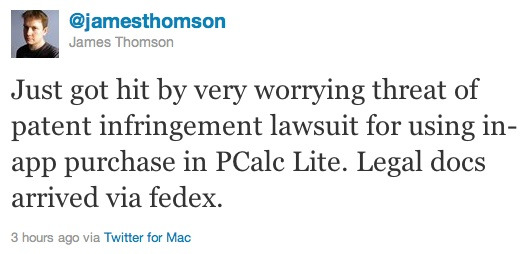
This overly popular business model scheme is not only affecting the brick and mortar businesses. It is also affecting application development and social media aspects of many businesses. Many application startups are hindered by these patent trolls because they know that there is a legal loophole. Many times these application startups become successful, but the slime ball companies find a similarity to the product that they have a legal patent on. Most of the time, these patent trolls take the majority of the application startups savings and leave them for certain termination.
Think of it from business startup point of view. If you are aware that your social media or online application will be using technology that is legally patented, under a very small technicality. Would you even try to launch your business idea in hopes that your successful product slips through the cracks of these slime ball companies? Probably not. After all, why would you want to dedicate your life and money to something that can be demolished overnight?

In the end, what these patent trolls are doing is slowing down the progression of technology and innovation as a whole. This is because they have no intentions of progressing the patented ideas that they own, even though there are plenty of people out there who would dedicate their life to improving upon that very same patented idea.
The business model that these patent trolls are using is spineless and extremely detrimental to “The American dream”. If congress does not start closely regulating the sales of patents, we will start seeing more and more $200,000 businesses being destroyed. The United States is all about freedom, and what says freedom more than starting your own business and living the American dream? If we continue to let these slime ball corporations take advantage of a legal loophole, we will not only be losing a sense of our freedom as Americans, we will also lose the technological pace that has been an integral part of our success as a country.
0 notes
Text
Reliatibility in Social Media Marketing
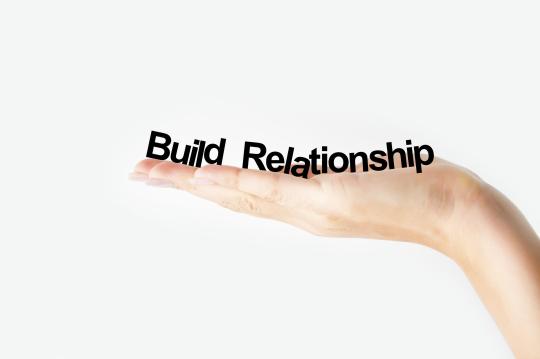
Most people believe that marketing in the social media sense is all about tweeting and posting updates in their network. This is definitely a true statement, but that is not all there is to it. People don’t only want to see updates, they want to see a personal story behind the content stream. Ask yourself. Would you rather take someone’s word on a product that they are trying to sell, or would you rather identify with what they are saying in a way that relates to your personal life?
Social media success is not derived from various social networks. It is created on one’s own personalized website. It is the content that you put out there for the world to see, and through social media, you can encourage others to visit your webpage. It is the stories in which you tell that attracts an audience. Obviously, there is a lot of content out there that you can use for free, your personal website and, or blog will be your most prominent resource for revenue streaming.
Most of the time, peoples biggest problem is not what they are doing on social media. It’s just the general notion that all they need to do is just get by with whatever marketing thoughts that come to them. People need to be putting out sharable content that will generate traffic for their social media page, and ultimately their website. However, generating traffic for pones web page is not as easy as it may seem. It demands a lot of hard work.
A good place to start sharing your content is to create and share your thought on your very own blog. Your blog needs to be user friendly to ensure that people know how to share your blog posts with the rest of the world.
A successful content stream is not made up of a couple of blog posts, you will need to remain consistent with your thought process and your will to share that with the internet. The kicker is that you will need to create the majority of your content right when you start up your blog. When your stock is empty, you will need to skip every stone onto the water to see what will resonate with your target audience.
One way to start is to speak with people in your life about your business adventures and your experiences. After that, turn those personal experiences into articles. This way you are telling a personal story that others can relate to and, it won’t even feel like a hassle to do. Telling life stories can often be fun. If you are not confident in your written English, simply ask your friends and family to edit your work. They may even be able to collaborate a little bit of their business experiences with yours, or at the very least spiff up the grammar on your blog post.
Sometimes expressing your life experiences are hard to put into words. That is fine, but you can’t expect your target market to understand that notion when they don’t have a good feel for who you are as a person. At the end of the day, if you are not comfortable sharing your stories with the internet, then you may want to reevaluate if social media marketing is for you and your business.
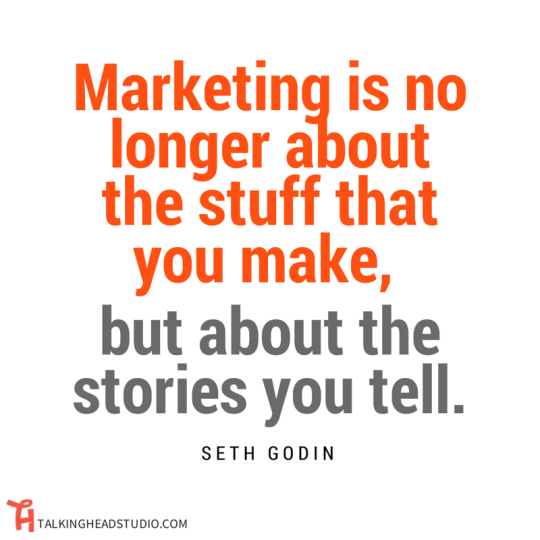
Innovative ideas are hard to come by, but brainstorming may help. In the meantime, here are some great ideas to ask yourself and your business colleagues.
· * What was your last extremely funny business related incident?
· *How will people benefit from buying your product as opposed to your competitors?
· *What makes you different from what others do in your field of business?
· *Why are you in the industry that you are in? Besides money, what is in it for you?
· *Why is your brand innovative and desirable?
· *What can others learn from your past accomplishments and mistakes?
· *What is the most bizarre turn of events that benefitted or hurt your business?
· *Have you recently had an encounter with an interesting person? If so, were you enlightened by their words?
· *What do you have to overcome the most in order to build your business? How do you solve those tasks on a daily, or weekly basis?
· *What experience can you recall when you took a naive approach to building your business? Was it somewhat comical? And would others relate to your humorous misfortunes?
There is a very good chance that many of the stories that you will derive from these questions are personal. This is a desirable trait n marketing because personality is what makes your stories stand out from a lot of your competitors. If you can harness this this tactic, then you and your business will likely be remembered by potential customers.
0 notes
Text
Twitter Tools

When discussing Twitter, it seems simple enough. You are limited to using 140 characters while composing a tweet. But there is so much more information that needs to be attained when reaching out to a targeted audience.
Obviously social media advertising is popular among many firms. The biggest reasons of which is because the service is completely free. Even if an organization has significant brand loyalty, this free social media outlet can serve little to no purpose. There are some tools that can help companies to create free organizational value.
Classifying Accounts
While on Twitter, you will inevitably get a follow from a random person. Sometimes these random accounts have thousands of followers, but no real proposition for how they acquired so many followers in the first place. You may choose to follow these accounts back, but you must know that these types of accounts will bring no organizational value to your company. Often times there is even an ulterior motive behind the innocence of these accounts.
Hashtag Search
To find tweets about the topics that you and your organization are interested in, you can search for a relevant hashtags. If you want to know what others think about your competitors latest stock market crash, you can find what they are saying, and figure out more detailed information that is unique to Twitter, only.
This method is terrific for finding people who are interested in the same things that your organization is. You can increase the quality of people who follow your Twitter by repeating this process.
Favorite For Later
Sometimes we find ourselves scrolling through our Twitter feed when we find a very interesting article. Ideally, we would like to read that information right on the spot, but what happens when we don’t have the time to read it right then and there? When we get back on our feed a few hours later, that information will be really far down on the list. Usually when this occurs, people tend to give up.
There is a much simpler way of coming back to these interesting tweets, and that is by adding them to your favorites. Once a tweet is favorited, it is left in a file on your Twitter profile page. Here, all of your favorite tweets will be stored for future knowledge.
Twitter Lists (Relivant people)
When a marketing Twitter account grows big enough, it becomes hard to follow the Tweets that you are actually interested in. Usually, there are too many pages, and not enough time to find these tweets. The solution to this problem is to find out how to create Twitter lists of the people whose tweets are actually worth reading. I have found that the most reliable way to accomplish this is through the Tweetdeck application.
Find the Professionals
Most companies desire to connect with as many people as possible while on Twitter. However, realistically, there are not a whole lot of accounts with useful information or revenue potential. One way to connect with a professional crowd is to find a person of interest that you already follow. Then take a look at who favorite their Tweets. Once you view the list of people who favorited those tweets, you can open up their personal account and choose to read their Tweets, or even follow them for yourself.
Pop the Question
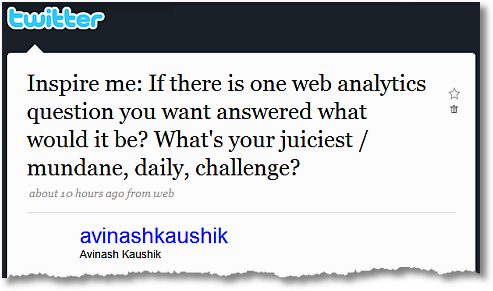
When a company acquires enough followers, they can utilize them by posting a question. The idea is to get feedback that will bring your company to the next level. Some good questions would be “How can we help you on an everyday basis?” or “What expectations do you have for our company?”
If you ask the right questions, people will give you the right answers. And it’s all free!
Rewarding for advertising

If you really want to get your followers to pay attention to your page, you may even have to create some kind of Twitter giveaway. For example, a lot of accounts offer a chance for one of their followers to win a product if they retweet the tweet that you created.
Obviously, everyone wants a chance to win a free product. And with one click of the retweet button, they are entered into the running. Sure, you will lose one piece of inventory, but you may get up to 1000 retweets in that process. That would mean that everyone that is following those 1000 people will see your product, free of charge! Except for that one asset that you
0 notes
Text
You are not A gadget Ch.1

You Are not a Gadget is a book by Jaron Lanier. In chapter one, he discusses how technical lock-ins have halted the overall progress of our world. Lanier furthermore explains how lock-ins cause maturing digital designs to be frozen into place, without any room for progress.
What is a Lock-In
The lock-in phenomenon occurs when modern software design is set to only be compatible with our previous, outdated software system. As we become more and more depended on our outdated software, the possibility for a revolutionary program lessons.
If a new groundbreaking software system is invented, it may not be compatible with the previously existing network. In this case, a team of computer software engineers would have to completely re-structure the new software in a way in which it can comply with the previously existing software. The biggest problem with this notion is the fact that it is extremely hard to do. Therefore, it hardly ever happens.

Change
There are very few options in changing our outdated programming system. These options are often halted because the system already works, and it is the easiest way for humans to program. Other contributing factors include what is politically reasonable, what is in style in a particular era, and what is created by chance. It is hard to break this barrier because there is no sense of urgency to uplift the existing software core. The notion of “If it isn’t broken, why fix it” becomes extremely relevant in this case.
Are we going to wait until it’s entirely too late to re-design this outdated software, or is society going to embrace Lanier’s hindsight and change what will eventually become obsolete before that time comes. In order to do something about the way software is presented to us is to become determined to change it. If we stress this issue to students taking computer software courses, we can get the gears in motion to create a feasible revolution for future software systems.
If we do break through this barrier of technological complacency, political agreements will have to be met in order to run the new system. The biggest of which will be figuring out where the funding will come from. In all likelihood, in my opinion, our government will take the stance of “If it is not broken now, why should we fix it?”
Wait until there is a problem
If we do wait until our existing software becomes obsolete, there will be a huge problem. Sure, if we scramble to reshape our system, it will get done. However, in order to re-connect the system, we will end up re-shaping it with a sense of urgency. The problem with this is the fact that the reformatting will not be done as well as it could be.
If we start reshaping the system today, we will have time to re-format the software for years on end, making a well-designed format that will live up to its full potential. In my opinion, if we wait until our existing software is obsolete before improving upon it, the newest model will only last as long as the first.
Obviously, it is understandable to be complacent with the system that we have now because technology is still in its infancy. If we examine the history of technology on earth, we can see that this is the very first wave. Mistakes will be made in this first wave, and that’s alright. But why must we wait until the day that our system quits working before we improve upon it? Just because technology is in its infancy doesn’t mean that our current software will last forever, even if it seems that way.
Musical transitions
If we take a look at the progression of how we listen to music, we will see that it has drastically changed over the decades. This is because the need for change in music is much easier to complete and much more lucrative than it is software systems.
First, humans listened to music through a phonograph, then we improved upon that by creating the jukebox and record player. These early forms of music players are examples of lock-ins because they were not compatible with each other, or any other technological advancements. In order to improve upon our existing musical experience at the time, we had to completely drop these outdated systems, and start from scratch to make a new system.
Drop the Lock-Ins
After record players and jukeboxes become outdated, tapes and CD’s were born. CD’s broke the mold of the Lock-in concept because they were much more compatible with other music players, such as computers, DVD players, Xbox’s, and even car stereo systems. However, as time progressed, the CD became less convenient and change was needed, yet again. So things like iTunes and music applications were created to enhance society’s convenience issues.
Modern day
The modern day music experience seems to have brought back the lock-in concept. Music applications such as Spotify and Pandora have come to a dead end. There is a sense of conformity with the overall scheme of these applications. We are forced to listen to commercials while using these applications, and there are not very many options when choosing which songs that you want to play. Pandora is a one way road, once you skip too many songs, you cannot skip any more, and that’s the way it is.
As of right now, these application are easily accessible, and free, so I don’t see them disappearing anytime soon. Until the next invention is rooted into society, we are Locked-In.
0 notes
Text

During the time that I have spent following Haworth Incorporated, I have found that they stick to a few trends in order to keep their community engaged. Their most appealing tactic seems to be giving away prizes for the people who retweet their posts. In one instance, Haworth tweeted out that they will be giving away a Haworth brand office chair to one of the lucky people who retweet that particular post.
This method of advertising offers more exposure than ever before because people from inside and outside of the community will see the post and possibly start to follow Haworth Incorporated.

Since I have become a part of the John Deere Twitter community, I have realized that they have a genius approach in creating organizational value. Not only do they post pictures and articles about their products. They also leave their community on the edge of their seat. In one instance, John Deere posted a picture of their newest lawnmower model. Now the lawnmower is impressive by itself, but the company decided to create anticipation by covering the back wheels of the lawnmower. Included on the post was the caption “Unlike anything that you’ve ever seen”.
Five days later, John Deere revealed their secret to the community by posting a picture of the rear tire. In the picture, you can see that the whole wheel molds to whatever surface that it encounters, creating a smooth ride for the diver.
Two days later, John Deere Inc. made their last post referencing their new machine. They posted a slow motion video of their lawnmower going over some rough terrain. In the end, it was worth the wait because I got the chance to see something that I had never seen before. This tactic even made me want to retweet it for my followers to see.

Dow chemical had a slightly different approach to their style of brand awareness, via Twitter. Dow does create some brand awareness by advertising and by posting relative information regarding their industry. However, they seem to take the option of reaching out to their community first hand. For example, a person had a question for the company, so they tweeted at the Dow’s official Twitter page. Within minutes, the person who runs Dow’s Twitter page responded to the question.
I feel as if Dow’s social media presence is earning some brand loyalty through their quick response times and reliability. In my personal assessment, I would say that being a part of the Dow community can only benefit you. Which is a win-win situation for the company and for the community, as well.
Dow 2
Dow combines the power of science and technology to passionately innovate what is essential to human progress. The Company connects chemistry and innovation with the principles of sustainability to help address many of the world’s most challenging problems such as the need for clean water, renewable energy generation and conservation, and increasing agricultural productivity. After scrolling through Dow Chemicals twitter account, it’s clear to me that they do their best to respond and reach out to customers. Not only do they re- tweet mentions, but they also respond back usually the same day with some sort of response. An example of this was someone tweeted at them asking where their son could apply at for a position and Dow Responded with a link to their website of where he could apply at or receive further information on the subject. Another thing Dow does is have live tweet sessions where people from Dow will be live tweeting for a set time period and if people tweet using there live tweet hashtag, they have a strong chance of getting a response back.
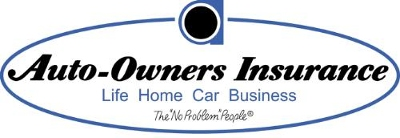
Auto-Owners insurance are also very active on their twitter account. They do a good job of having a balance of getting the information they want to present out with tweeting links of their message out and providing links to their main website. They also do a good job interacting with customers and re tweeting people’s tweets that mention them. A good example of their customer service on their twitter was someone tweeted at them asking how they could get Justin Allgaier auto owners insurance die cast for his collection and they responded back saying sorry, and that their die cast car wasn’t available for public purchase. Responding back to people and letting them know you’re listening and care can create a better social media presence amongst current and future customers.
Edited by Jordan Scheffler and Adam Bentley
0 notes
Text
Becoming a Social Organization: Chapter 3

In 2015, most companies have taken to social media in hopes to increase product value. The biggest problem with a lot of these companies is the fact that they use a conservative approach for their social media outlets. They often fail to adapt to certain trends, while neglecting the inevitable complications that arise within the community that they are trying to connect with. The majority of these companies respond to these issues in a policy oriented fashion, while the successful companies emphasize the importance of social media value, and take the steps to become consistent and reliable for their targeted community.
When an organization lacks creativity, they will just create a social media outlet and expect results from that technology alone. This organizational flaw is commonly referred to as provide-and-pray. Only 10 percent of these provide-and-pray companies pan out in the long run. The remaining 90 percent will never see significant community forms around their organization, or a community will form around the company, but the organization will fail to take the next step, to provide real value for the community to rally behind.
The reason why these companies fail to take the next step is simply because they do not know how to. Since this marketing strategy is so new, there is no definitive way to launch a successful social media outlet. Therefore a lot of these companies will underestimate the prospective value of their social media network and only emphasize the technological aspects of their social media outlet. Instead, a company should be forming a plan of purpose for the community by following the most up to date collective behaviors that technology offers. When a company neglects these crucial technological tendencies, they end up with a lack of fundamental principles that is necessary in mass collaboration.
Another reason for failed social media value is due to the lack of confidence that managers and executives have in their social media department. In the case when an employee does exhibit some insight on how to generate value, they are often over sought by their manager’s skepticism. Therefore, the social media community is stuck with following an outlet that is not properly organized. In this case, the company fails to deliver a genuine purpose for their targeted communities. Therefore, there is no incentive for the community to invest time or money into that social media outlet.
On the contrary, organizations can adopt a defined approach to create social media value. There are several steps to obtain a successful defined approach. A company can use a checklist of what works best for them to cover the essentials of their business plan. This method can increase the company’s chances of a successful collaborative community, which will produce results that can help the organization to achieve its mission and goals.
The company can also assign and provide transparency for everyone who is involved on the project. If everyone knows what they are doing, and why, they can comprehend what is expected of them, and how they are supposed to meet those expectations.
A defined approach can also increase an organizations social media value if the company keeps track of what has worked for them in the past. If they can reenact those successful ideas, they can achieve repeated success, and built off of that success to ensure reliability within the community.
Organizations must also keep a close eye on who is involved within their social media approach, and if they are taking the proper steps to find innovative ideas that will ultimately generate value for the company. If an employee believes that information technologies should play the main role in the social media outlet, this will cause the company to experience a stagnant outcome.
After all, the company is targeting a community of people, not robots. Social media must be viewed as an actual business capability, not an information technologies project. No company is guaranteed success, and a lack of competence regarding social media could even take down a monopolistic company. Every company must adapt to the times, or become extinct.
1 note
·
View note
Text
The Social Organization: Bradley & McDonald, Chapters 1&2

In this day and age, businesses are looking for a leg up on the competition. Every business does some sort of advertising, whether it be billboards ads, television commercials, or newspaper ads. However, very few of them are catching on to the social media aspect of marketing their brand and improving upon business value.
One of the best ways for a company to increase its business value is to adopt a social organizational approach. This means that the organization will strive to strategically apply mass calibration to address significant business challenges and opportunities. If the company successfully adopts this approach, they will be able to produce better outcomes, and possibly develop a new industry standard.
Clearly the internet is a fairly new found target for companies to get their brand name out there. Sure, most companies are willing to shove their brand in your face in between your favorite songs on Pandora, or any other freemium application. On the contrary, a unified social organization will find a solution to get past this stagnant approach of advertising and create something new that will improve value.
In social organizations, employees, customers, stakeholders, and suppliers are all important parts in how the company operates. This is because every sector works together in order to get the greatest value from the company’s products and services. A lot of company social organizations have thought of ways to further enhance their reputation, and that is by using social media. However, most of these social media initiatives do not work out. One of the biggest reasons for stationary business value results through social media, (Twitter, Facebook) is due to the notion that social media technology will create brand awareness on its own.
A successful social organization will collaborate from within and recognize and assess the faults with the company’s social media approach. One way for a company to set itself apart from the pack is to stop thinking of social media in terms of the internet itself. Unlike social media, the internet in general is a place where you can force advertisements upon a mass audience against their discretion. Through social media, you can’t simply rely on brand loyalty alone if you want to increase your value. A company must think of ways to allure a targeted audience with actual substance and interaction. This method may actually get social media users involved with the company and increase its overall value.
Citing:
Bradley, Anthony J., and Mark P. McDonald. The Social Organization. Boston: Gartner, Inc., 2011.
0 notes